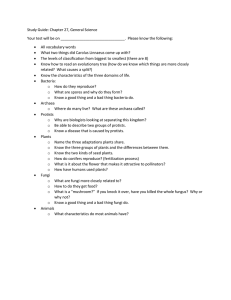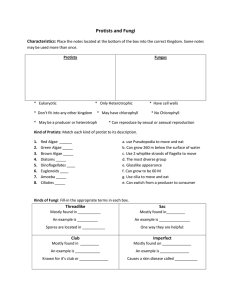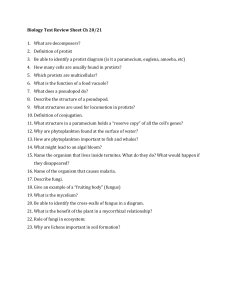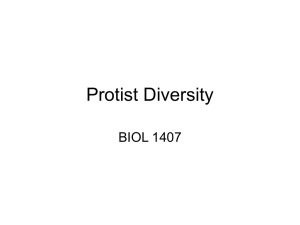Russellville High School - Understanding by Design Template
advertisement
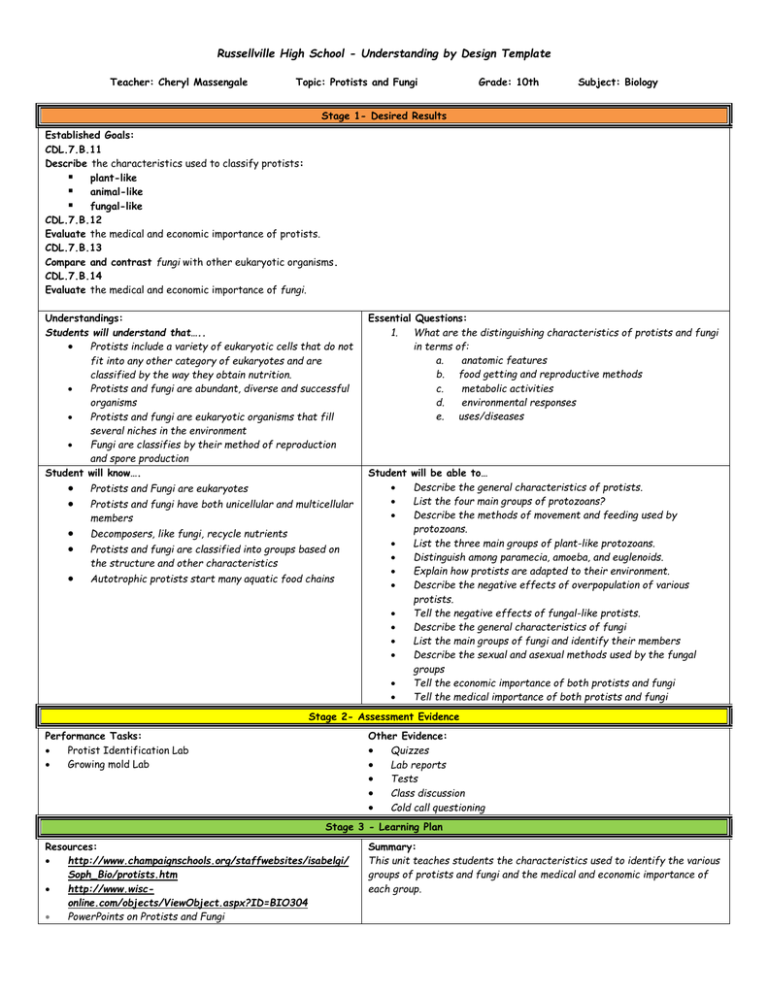
Russellville High School - Understanding by Design Template Teacher: Cheryl Massengale Topic: Protists and Fungi Grade: 10th Subject: Biology Stage 1- Desired Results Established Goals: CDL.7.B.11 Describe the characteristics used to classify protists: plant-like animal-like fungal-like CDL.7.B.12 Evaluate the medical and economic importance of protists. CDL.7.B.13 Compare and contrast fungi with other eukaryotic organisms. CDL.7.B.14 Evaluate the medical and economic importance of fungi. Understandings: Students will understand that….. Protists include a variety of eukaryotic cells that do not fit into any other category of eukaryotes and are classified by the way they obtain nutrition. Protists and fungi are abundant, diverse and successful organisms Protists and fungi are eukaryotic organisms that fill several niches in the environment Fungi are classifies by their method of reproduction and spore production Student will know…. Protists and Fungi are eukaryotes Decomposers, like fungi, recycle nutrients Autotrophic protists start many aquatic food chains Protists and fungi have both unicellular and multicellular members Protists and fungi are classified into groups based on the structure and other characteristics Essential Questions: 1. What are the distinguishing characteristics of protists and fungi in terms of: a. anatomic features b. food getting and reproductive methods c. metabolic activities d. environmental responses e. uses/diseases Student will be able to… Describe the general characteristics of protists. List the four main groups of protozoans? Describe the methods of movement and feeding used by protozoans. List the three main groups of plant-like protozoans. Distinguish among paramecia, amoeba, and euglenoids. Explain how protists are adapted to their environment. Describe the negative effects of overpopulation of various protists. Tell the negative effects of fungal-like protists. Describe the general characteristics of fungi List the main groups of fungi and identify their members Describe the sexual and asexual methods used by the fungal groups Tell the economic importance of both protists and fungi Tell the medical importance of both protists and fungi Stage 2- Assessment Evidence Performance Tasks: Protist Identification Lab Growing mold Lab Other Evidence: Quizzes Lab reports Tests Class discussion Cold call questioning Stage 3 - Learning Plan Resources: http://www.champaignschools.org/staffwebsites/isabelgi/ Soph_Bio/protists.htm http://www.wisconline.com/objects/ViewObject.aspx?ID=BIO304 PowerPoints on Protists and Fungi Summary: This unit teaches students the characteristics used to identify the various groups of protists and fungi and the medical and economic importance of each group.

